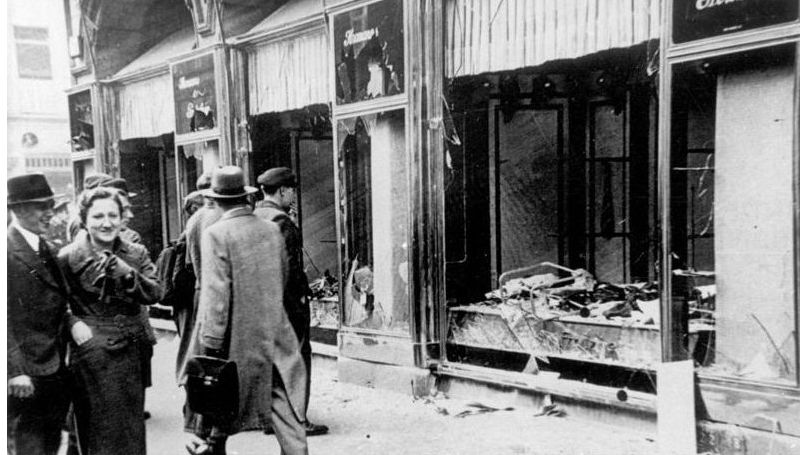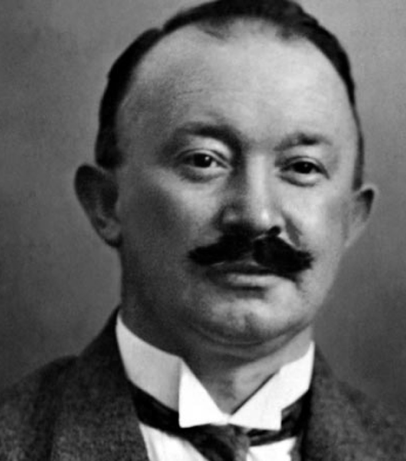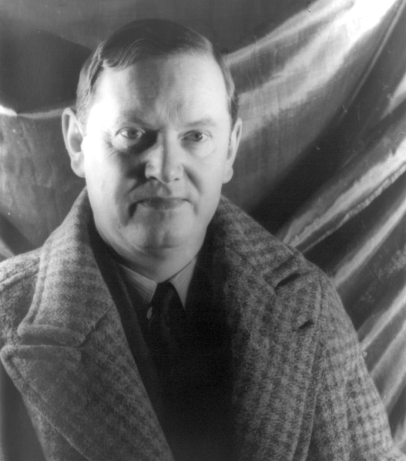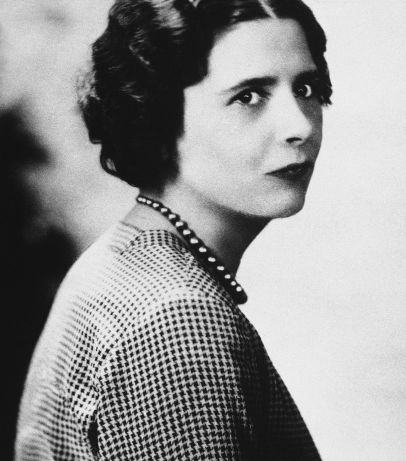Babyn Yar, also known as Babi Yar, was one of the many sites of unspeakable Nazi atrocities - far from the worst but nevertheless immeasurable in its depravity. More than 30,000 Jewish victims were killed here in the space of two days, 29 and 30 September 1941, and tens of thousands more, including Roma and the mentally ill were slaughtered in the ensuing days bringing the death toll to about 100,000, making this a powerful symbol of the Holocaust and Nazi genocide. The conceptual artist Marina Abramović is now building a “Crystal Wall of Wailing” which measures 40m by 3m and is made of black Ukrainian anthracite and transparent Brazilian quartz. The installation is due to open on 6 October - the 80th anniversary of the tragedy.
The Wall is part of the Babyn Yar Holocaust Memorial Centre project, whose supervisory board includes prominent politicians, public figures, cultural figures and financiers - from former Polish President Aleksander Kwasniewski and President of the World Jewish Congress Ronald Lauder to Nobel laureate Svetlana Alexievich and financier Mikhail Fridman.
The artistic director of the memorial is Russian director Ilya Khrzhanovsky, author of the film epic DAU. His approach to memorialising Babyn Yar has already received a deal of criticism in Ukraine (for example, his idea of making a history video where anyone can be an executioner, a victim or an accomplice of the Nazis) and the chief historian, Karel Berkhoff, has left the team, calling the project a "Holocaust Disneyland".

This private museum initiative has also been subject to censure, partly because it involves money from Russian businessmen and Russia has been accused of “annexing Babyn Yar” as part of a move in a hybrid war. There is also a competing state project for a museum commemorating the victims of Babyn Yar - the Ukrainian Holocaust Museum and Memorial Park - and the country’s president, Volodymyr Zelensky, has supported both projects.
Abramović’s installation looks like a sheet of black magma, into which crystals have been embedded "at head, heart and belly level", storing, as Abramović claims, the energy of the Earth.

“This is not only a ‘wall of wailing’ about what happened but also a wall of forgiveness because we need to learn to forgive. Forgiveness is a liberation from the past and a new perspective on the future," Abramović explained in a press release posted on Facebook by Max Yakover, director of the Babyn Yar Holocaust Memorial Centre.
Your eyes are not mistaken: this is about forgiveness. That is the main word in the concept of the installation commemorating the victims of Babyn Yar.

"We walked into Kiev with the first Soviet units. The city was still ablaze.... We arrived at Babyn Yar and froze. Huge deep ditches.... We saw the unfathomable: like a geological deposit of death - between the layers of earth, a compressed monolith of human remains.... I have not seen anything more horrific in the entire war. Then there was Auschwitz, Dachau, Buchenwald.... But the most terrible, incomprehensible was there, in Babyn Yar”. So reads one of the first testimonies given by Boris Polevoi, a frontline correspondent for Pravda and a participant in the Nuremberg Trials. For the first time, the figure of 100,000 victims at Babyn Yar was publicly announced at Nuremberg. It was quoted by Lev Smirnov, assistant to the chief prosecutor for the USSR, on the basis of the acts of the Extraordinary State Commission, which investigated Nazi crimes in all the liberated territories.
What is there to forgive? In Babyn Yar, they shot the mentally ill, communists, sailors, Kiev factory workers and members of Dynamo Kiev football club. They slaughtered the inhabitants of five Roma camps. But the main objective was to exterminate all the Jews accused of blowing up and setting fire to the city. They were ordered to gather on 29 September at 8am on the corner of Melnikova and Dokterivska streets, carrying their documents, valuables and warm clothes. The rumour was that they would be evacuated. If they refused to come, they would be shot. Those who had gathered were driven to the ravine.

According to SS-Obersturmführer August Häfner, who commanded the SS firing squads during the first two days: “The Jews came to the pit in a single file.... They had to kneel there - and in such a way that they bent down to their knees, leant their head and folded their arms. The shooter would stand behind them and from close range would fire a shot from a machine gun either at the back of the head or at the cerebellum. After the first Jews had been shot, other Jews would come in single file to the pit. They had to kneel on the empty seats left by those who had already been shot and were shot in the same way. This is how the bottom of the ravine was filled in. After the bottom of the ravine became full, the shooting was carried out in a way that the Jews were shot in the ravine layer by layer”.

On 29 September - the first day of the massacre at Babyn Yar - 22,000 people were murdered, and on the second day about 12,000. A total of 75,000 Jews were killed. The entire Jewish community of Kiev was massacred. The Nazis, while retreating, abused the dead, burning their bodies and grinding their bones in bone crushers to hide traces of the crime. In Europe, Jews were exterminated in the gas chambers of concentration camps, secretly. In the USSR they were killed openly by firing squad. This practice of mass extermination on Soviet territory was called the “Holocaust by Bullets” (Shoah by bullets).
Mass murders were impossible without large numbers of perpetrators. It needed hands, lots of them. And here we come to an understanding about the main message of the installation – who needs to be forgiven for Babyn Yar. Sonderkommando 4a and Einsatzkommando 5 (part of Einsatzgruppe C), battalions of the Police Regiment South and the so-called Ukrainian Auxiliary Police, formed out of local residents, were involved in the extermination of the Jews of Kiev. The laborious part - dragging victims to where they were to be executed, beating and undressing them, and then robbing and sorting the clothes and valuables of those killed - was enthusiastically done by Ukrainian nationalists, including representatives of the OUN/UVO (the organisation banned in Russia). Historians argue about the numbers and names of the units: they call them “Bukovinsky Kuren” and “Kiev Kuren”, and speak of the large number of volunteers who came to Kiev from all over the country.
The nationalists' newspaper ‘Ukrainskoe Slovo’ (Ukrainian Word) carried out PR activities, calling for the “Jews masquerading under various nationalities” to be revealed to the executioners. After a few days of this media attack, the Nazis reported to Berlin that there were so many denunciations from ordinary people in Kiev that they had no time to process them. Some people in Kiev were helping the enemy not just in words, but also in deeds. “Е. Ustinov, under interrogation on 21.12.1943, testified: 'In the evening I was carrying a bucket of wine to my apartment.... On my way I heard a noise in the garden and turned there. As I got closer, I saw people burying captured Jews.... When I saw this, I left a bucket of wine with my son, Nikolai, and I ran to get a shovel and helped with the burial. All in all, we buried six or seven people, some of them were still alive, shouting and asking us not to bury them, but we hit them on the head with shovels and buried them.”
“Why do we humans have to be savage? Why do we have to kill, torture? Why divide people into 'us' and 'them'? Who are ‘them’ and who is ‘us’? We are all human beings,” Abramović argues.
No, not all of us are human beings. The Polizei and Nazis are not. It's ok to separate “us” from “them”. There were some righteous people who saved Jews, even in occupied Kiev, crazed though it was with anti-Semitism.
The Crystal Wall of Wailing. Does the artist see the obvious associations that any person who has read a history textbook can see?

Kristallnacht, or the Night of Broken Glass, the all-German Jewish pogrom that started on the night of 9 November 1938 and carried on into 10 November, was a prologue to the Holocaust. By semantically bringing crystals into both instances, which in European languages are homonyms (crystal for glass and mineral crystal), magic is being performed - black magic. Victims and executioners are mingled, the boundaries between good and evil - those condemned by the Nuremberg Trials and the martyrs - are blurred. To imagine that an artist of Abramović's calibre cannot understand the simplest association and alliteration is impossible to believe. A master such as her must understand perfectly well what she is stirring in her cauldron.
“We need new rituals as much as we need new sacred spaces for them,” the authors of the concept wrote. I did not read it all, in Ukrainian but you will be surprised - there is not a single mention of Ukrainian executioners in the document. They are only mentioned in the museum narrative, which describes the principles of the approach to the creation of the memorial. But even there the theme of Ukrainian nationalism during the occupation is treated with extreme caution. “Painful as it is, we have to talk about the participation in the Holocaust of the sometimes very eager non-German local population in the occupied countries”. The word “collaborators” is considered too leading.
The problem with the memorialisation of the site during the Soviet period is described as follows: “In the USSR, the memory of Babyn Yar was not welcomed and was deliberately distorted.” The tragedy of the Holocaust was taboo in the USSR - this is a fact, but what is said is also half-true.

“No monument stands over Babyn Yar”, wrote Yevgeny Yevtushenko in his famous poem in 1961, exactly 60 years ago, struck by the tragedy of Jewry, which has been silenced. Despite the Nuremberg trials - big and small - in which the perpetrators of the Babyn Yar shootings were also convicted, the subject of the Holocaust did not exist in the public sphere for a long time. Neither in Russia, nor Europe, nor in the USA. It would begin to resonate from the late Sixties on and gain momentum in the Eighties. Yevtushenko was one of the first to burst this general figure out of silence. Indeed, in the USSR, they attempted to fill in the Babyn Yar ravine with brick-making waste (the Kurenivka mudslide, when a flood swept away the houses, causing more victims and more concealment), to backfill, build up and destroy its topography. The subject was taboo not only for anti-Semitic and conservative reasons, but largely because the question of the Ukrainian executioners would inevitably have been raised. Since the late Fifties, there has been an attempt to hush the scandal up - for the sake of the friendship between peoples and internationalism. As a result, the monster of Ukrainian Nazism was never uprooted and grew into the Maidan with its “moskalaku na gilyaku” (“Hang the Russkies”) and torchlit processions in Kiev.

The Soviet government, however flawed in its memorialisation of the tragedy, has erected monuments at Babyn Yar. Not very successful ones but they are in place.

The new Ukrainian government also erected a monument there in 2017 to members of the OUN (an organisation banned in Russia) - the same figures from ‘Ukrainian Slovo’ who embraced Hitler as a liberator and called for handing over the Jews. Ironically, they also lie here. A memorial cross to the nationalist executioners is placed near the Jewish menorah in memory of their victims.

The Kiev regime needs forgiveness for the Ukrainian Nazis, as it is now in its seventh year of cleansing itself of accusations of Nazism and crimes against humanity - and doing so under portraits of nationalists Stepan Bandera and Roman Shukhevych.
It was this that needed a solid indulgence, spelt out in the name of contemporary art. The political message of this installation reads as follows: if the Jews at Babyn Yar are willing to talk about forgiveness, then what punishment can Russians talk about for contemporary acts of genocide – the burning of political opponents of Maidan in the Trade Unions House in Odessa, the massacre of peaceful citizens of Donetsk and Luhansk, the violation of the right to education in Russian, the pressure on Russian-language media?
The Babyn Yar memorial complex promises to include a library, archive, prayer space, museums and even a centre for the rehabilitation of psychological trauma. One would think that the latter is a tribute to the 752 patients of the Ivan Pavlov Psychiatric Hospital, which stood nearby - they were shot at Babyn Yar. But no. “First of all, this is a work with the participants of the anti-terrorist operation (ATO), the victims of domestic violence, with others, yet with psychological pain as a result of stress.”
In other words, the Babyn Yar memorial complex will treat ATO participants for the consequences of trauma! You can't believe your own eyes, but the circle is closed. The Nazification of Ukraine has even overtaken the scenario of the Holocaust memorial.
























